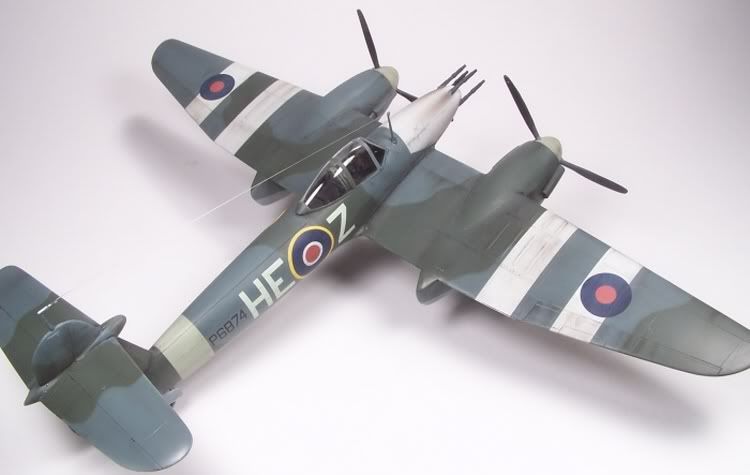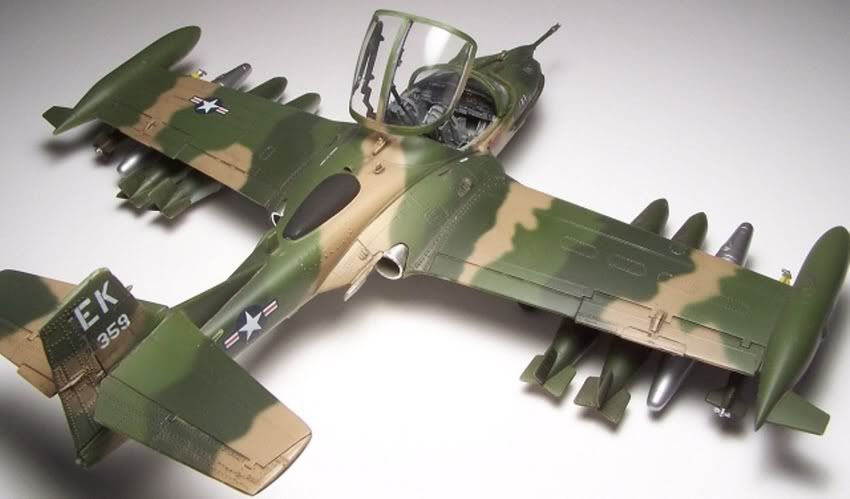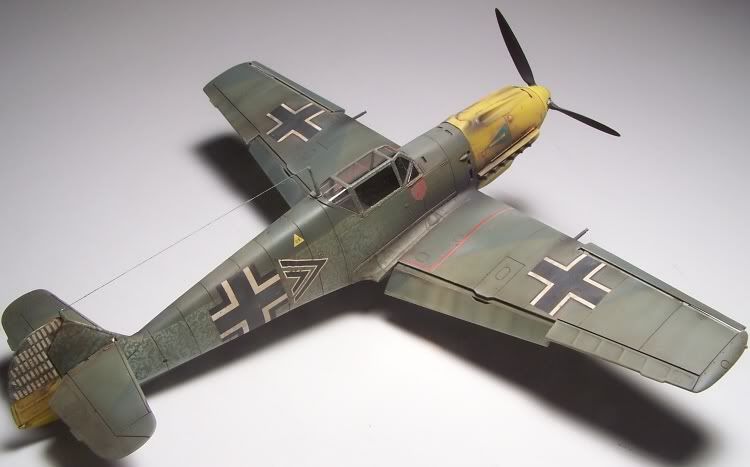like everyone else here, you will get varried opinions and techniques, and yes, it is according to the subject and research pics if they are available. usually for WWII british birds, mask it.......for vietnam era birds, freehand and masking sometimes........just according to the pics you can find of it. some say the free hand camo is out of scale, but you can make tight enough lines to make it look good on 1/48 scale by freehanding. i've been to museum's and stepped away from the an aircraft with freehand camo at 48', and could still make out the soft demarcation lines, so i like free hand on subjects that were really free handed in the field.
here are some pics that may or may not help. the masked paint are done as follows: apply the lightest color of the camo job to the entire upper surface of the subject, or where ever applicable. then, draw out the pattern of the camo into the subject with a pencil very lightly. using some transparent and fairly wide masking tape, i try to cover the pencil line from one side of the subject to the other, so i can "trace" the demarcation line onto the masking tape. when this is done, i take the tape back off, and cut along the traced line and reapply the tape to the appropriate place on the subject. i do this one piece at a time, and when i get all the demarcation lines traced and applied, i will fill in the "field". when all the tape is applied, using elmer's tak/poster putty, i roll it into very thing ropes and follow the edge of the tape that i cut to the shape of the camo pattern. when all poster putty is applied, i spray the next color, and if you have another color, i do the same thing again. painstaking, but a nice effect.
freehand is self explainitory, just spray all colors from lightes to darkest, get the general shape of the camo goin good, then thin your paint to ultra thin, drop the pressure down low, and clean up/ tighten up the demarcation lines. good luck, later.
MASKED

FREEHAND

AND MASKED AGAIN

AND FREEHAND AGAIN
